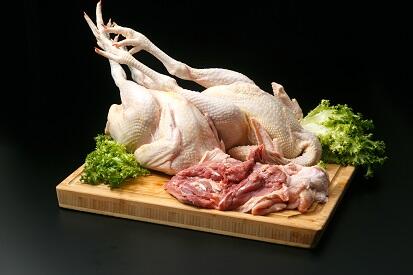Tokyo Shamo
| Registration Number | 77 |
|---|---|
| Name of the GI | Tokyo Shamo |
| Class | Meat |
| Date of Protection | 2019/05/08 |
| Producing Area | Tokyo Metropolis |
| Applicant - Name and Address | Tokyo Shamo Growers’ Production 347 Sugao, Akiruno City, Tokyo |
Producing Area
Tokyo Shamo is the meat of a chicken with 75% of Shamo breed hereditary, developed by crossing a pure Shamo rooster with a hen developed by crossing a selectively bred pure Shamo hen with a Rhode Island Red rooster.
Tokyo Shamo has the flavor closer to that of the original Shamo breed. It is also characterized by dark red meat, resilient texture, and minimal odor. It is offered in signature dishes at restaurants in Tokyo that adopt the policy of using locally-produced ingredients.
For the production of Tokyo Shamo, a crossbreed hen is made by crossing a selectively bred pure Shamo hen, which has been farmed in and near present-day Tokyo since the Edo period (1), with a Rhode Island Red rooster. Thereafter, the crossbreed hen is further mixed with a pure Shamo rooster to produce the Tokyo Shamo chicks. The chicks newly hatched in this way are grown as follows.
Chicks aged approximately 60 days or older are raised at a stocking density of 10 birds or less per 1 m2 either by cage feeding or floor flock feeding until they reach the age of 120 days or older, using a formula feed containing ingredients such as corn, soybean cakes, corn gluten meal, and fish meal. The corn used in the feed is not genetically modified and is free of post-harvest chemicals, as well as the fish meal is restricted to brands that has minimal burnt odor. Chicks should never be fed any feed containing antimicrobial feed additives (including antibiotics).
Cockfighting using Shamo (game fowl) breeds was a traditionally popular townsman culture in Edo, or present-day Tokyo. People in Tokyo used to eat Shamo chickens that were no longer able to fight or needed for selective breeding. Production of game fowl chickens has since decreased with the decline of cockfighting, and broiler chickens have taken their place, dominating the market.
In 1970, the Oume Livestock Experiment Center (then-Tokyo Metropolitan Station) gathered and farmed Shamo chickens which were the descendants of Shamo chickens in the Edo period and had been farmed by Shamo lovers in Tokyo. The Center continued research on selective breeding so as to eliminate the congenital aggression possessed by Shamo breeds, which had been bred specifically for cockfighting. Approximately 10 years of their efforts thereafter resulted in the establishment of a Shamo breed that could be housed in groups. In 1982, the Center brought into being a breeding method that produced Shamo meat having characteristics similar to that of a pure line Shamo breed. In 1984, distribution of the established breed began under the name of Tokyo Shamo.
Today, the Tokyo Shamo Producers' Association is comprised of 4 farmers in Tokyo, with an annual shipment of 20,000 to 30,000 birds.
- Edo period: A period of Japanese history extending from 1603 to 1867, under the shogunate established in Edo (present-day Tokyo). With Ieyasu Tokugawa as the first shogun, the Tokugawa family ruled the country thereafter under a system of centralized feudalism.


